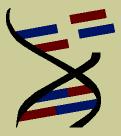
Genome Project Solutions
NEWS
The PhIGs ("Phylogenetically Inferred Groups") database and associated web tools have been launched, then updated, the first fully evolutionary analysis of all completely sequenced eukaryotic genomes, and containing nearly 653,000 genes
By Paramvir Dehal (Berkeley National Lab) and Jeffrey L. Boore (Genome Project Solutions)
The PhIGs database is a phylogenomic resource for sequenced genomes. Although many methods exist for clustering gene families, very few attempt to create truly orthologous clusters sharing descent from a single ancestral gene across a range of evolutionary depths. Although these non-phylogenetic gene family clusters have been used broadly for gene annotation, errors are known to be introduced by the artifactual association of slowly evolving paralogs and lack of annotation for those more rapidly evolving. A full phylogenetic framework is necessary for accurate inference of function and for many studies that address pattern and mechanism of the evolution of the genome. The PhIGs database currently contains 45 completely sequenced genomes of fungi and metazoans, containing 652,756 genes that have been grouped into 61,059 gene clusters. Each gene cluster is built such that the gene sequence distances are consistent with the known organismal relationships and in so doing, maximizing the likelihood for the clusters to represent truly orthologous genes. The PhIGs website contains tools that allow the study of genes within their phylogenetic framework through keyword searches on annotations, such as GO and InterPro assignments and sequence similarity searches by BLAST and HMM. In addition to visualizing the gene clusters, the website also allows users to browse multi-species synteny maps.
Read the publication describing
this here.
Access the PhIGs database.
BACK to News and Publications
